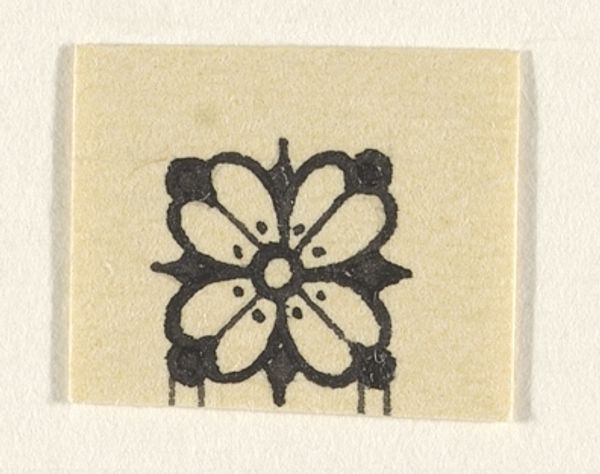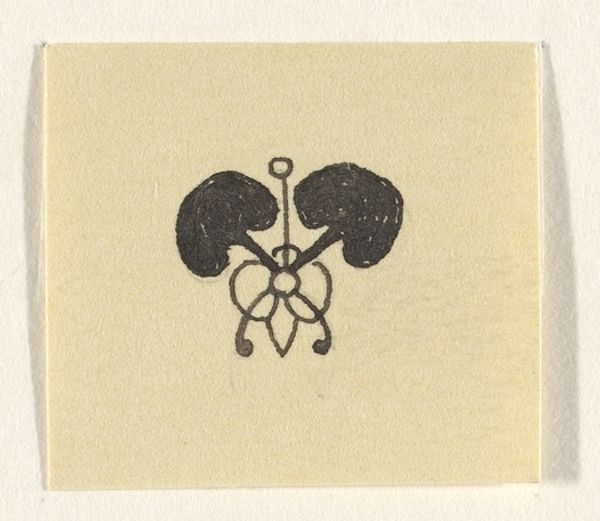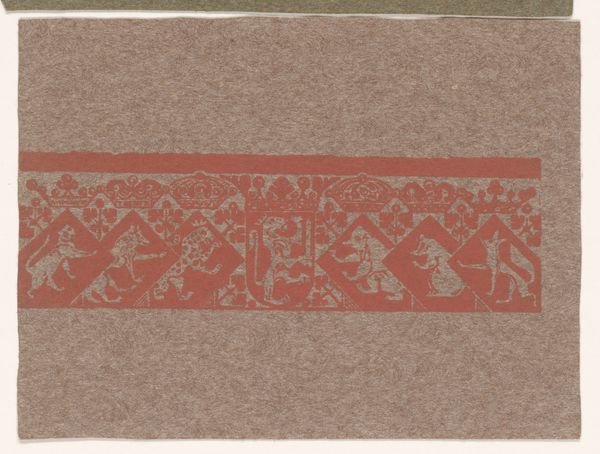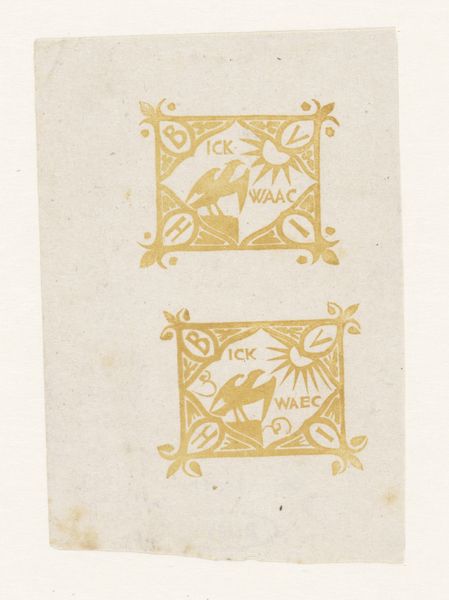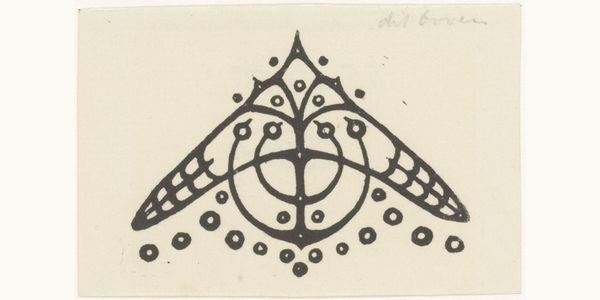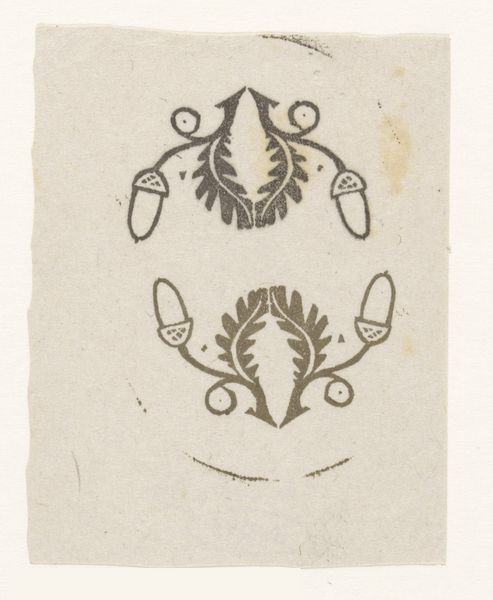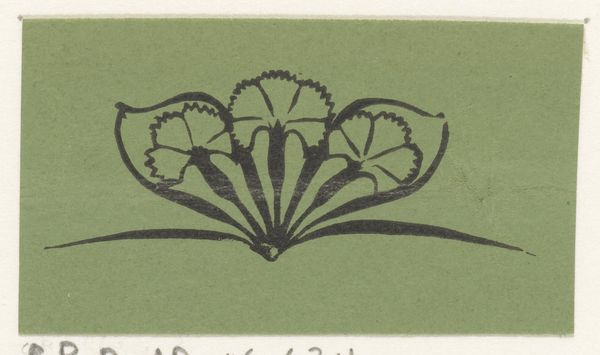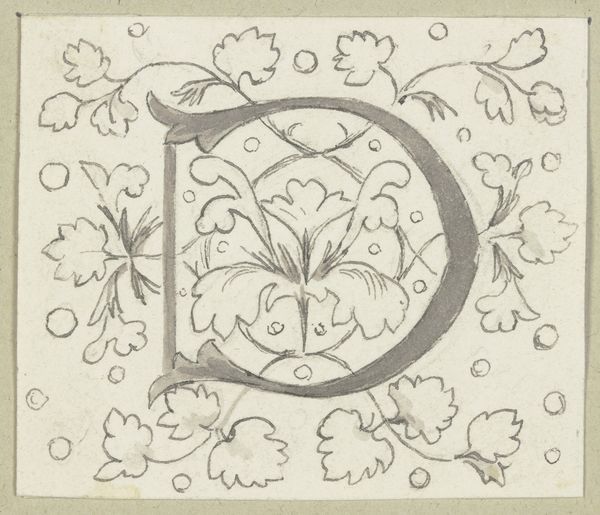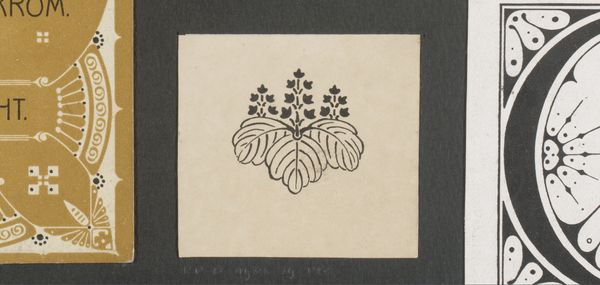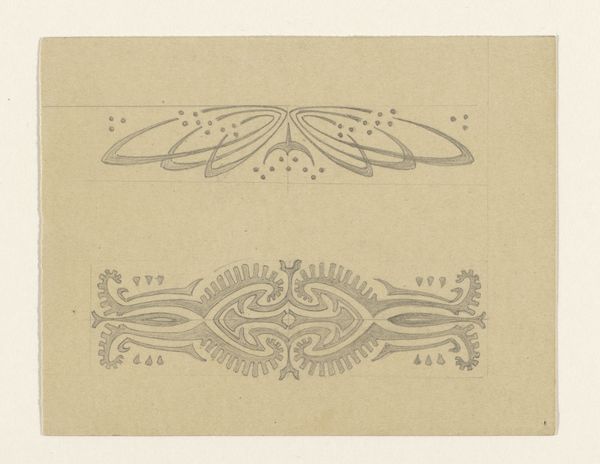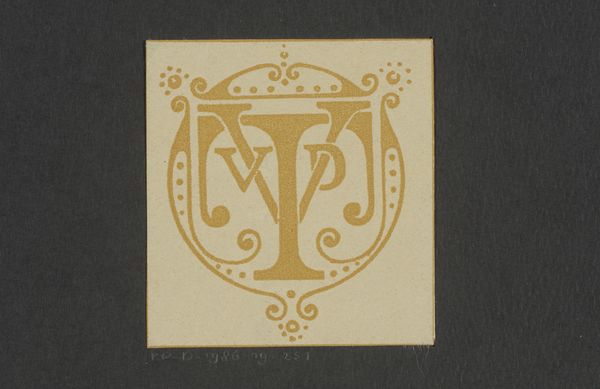
#
photo of handprinted image
#
aged paper
#
light pencil work
#
ink paper printed
#
old engraving style
#
personal sketchbook
#
ink colored
#
sketchbook drawing
#
sketchbook art
#
foil embossing
Dimensions: height 16 mm, width 21 mm
Copyright: Rijks Museum: Open Domain
Curator: Here we have "Vignette" by Julie de Graag, created sometime between 1888 and 1924. It’s currently part of the Rijksmuseum collection. My initial impression is its incredible delicateness. Editor: It's like a visual whisper, isn’t it? So spare, almost monastic in its simplicity. But let’s get down to the materials: this is ink on paper, probably printed, correct? The image suggests the artist employed ink and light pencil work to create the drawing. I'm curious about the accessibility of those materials at the time for women artists and the social factors that could contribute to it. Curator: Absolutely. There's definitely an embossed quality visible here. Consider the implications of an accessible printed medium during this period. De Graag probably relied on this printing production method. From an iconographic perspective, that laurel wreath is interesting, framing what appears to be some form of flower-like emblem. Editor: Right, it carries quite the weight of cultural meaning, this particular grouping. Victory, achievement... and in relation to the blossom motif... What could it tell us? The old engraving style itself invokes tradition and a sense of timeless quality. It also makes me think about the role of ornament in printed ephemera of the time. Curator: And this brings up questions, as to the purpose of these sketches; perhaps from a sketchbook, and potentially studies of motifs or decorative elements, judging by their appearance. These may as well come from commercial art as from any sort of self-expression. But perhaps those things cannot be easily divorced, anyhow. The symbolism is definitely something to contemplate further. What readings emerge when the materials are combined? Editor: I’d suggest, at the very least, something about cultivated hope. Curator: Interesting observation, and yes, it could definitely be read this way. Editor: Indeed, seeing this as a glimpse into artistic working methods enriches the artwork's meaning, highlighting artmaking as labor as much as symbolic composition. Curator: Yes, the convergence of materials and symbol truly captures my attention here. It reminds me that art isn’t born from an ethereal creative spring but it comes from labor, toil, technique and the artist’s social background. Editor: A powerful testament, indeed!
Comments
No comments
Be the first to comment and join the conversation on the ultimate creative platform.
